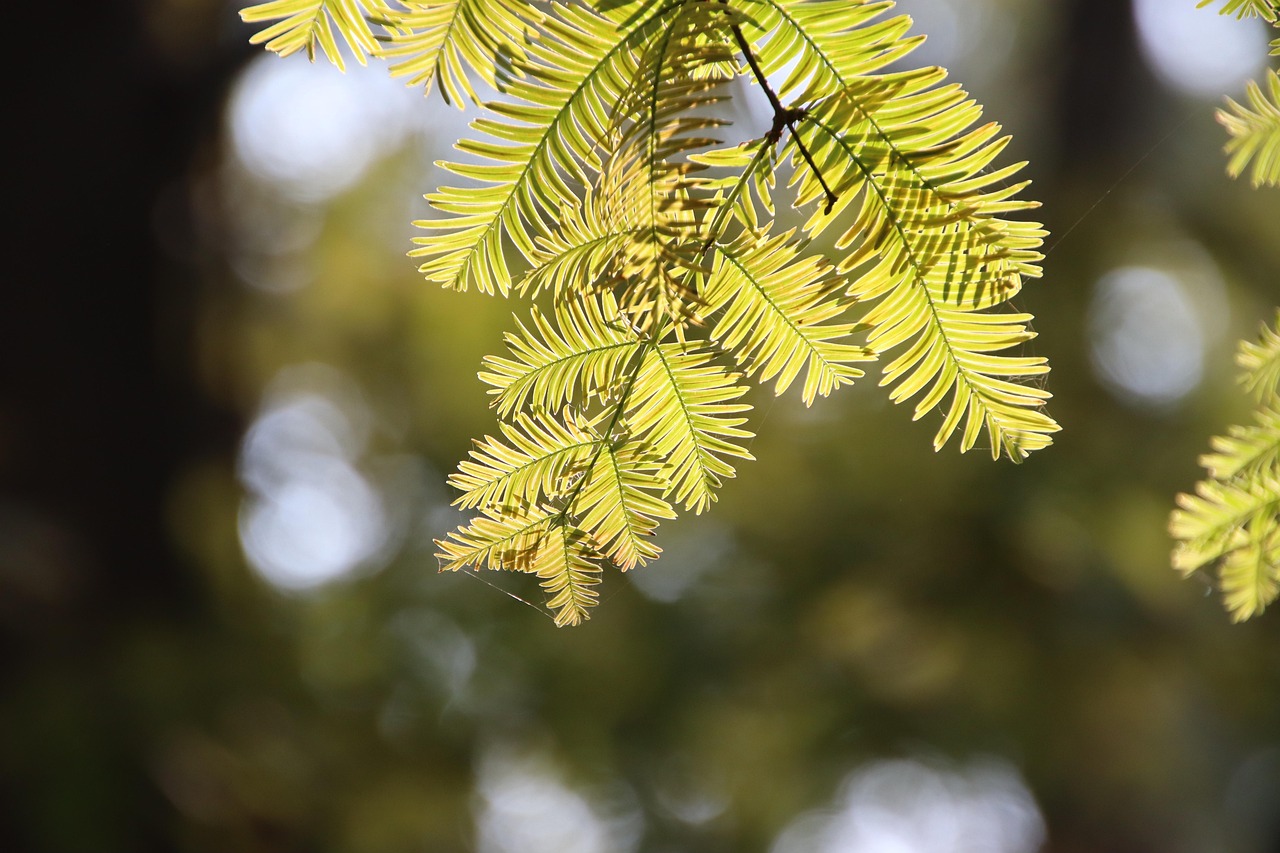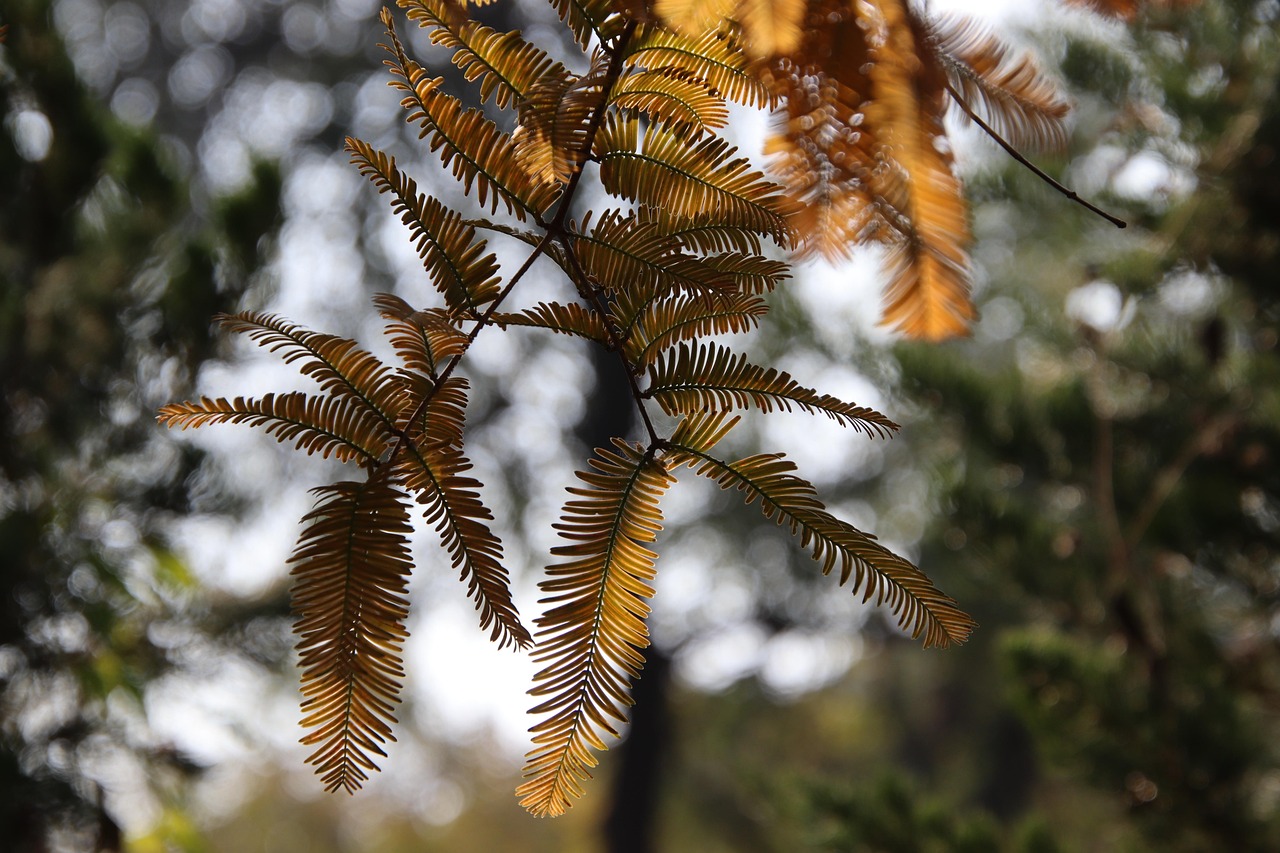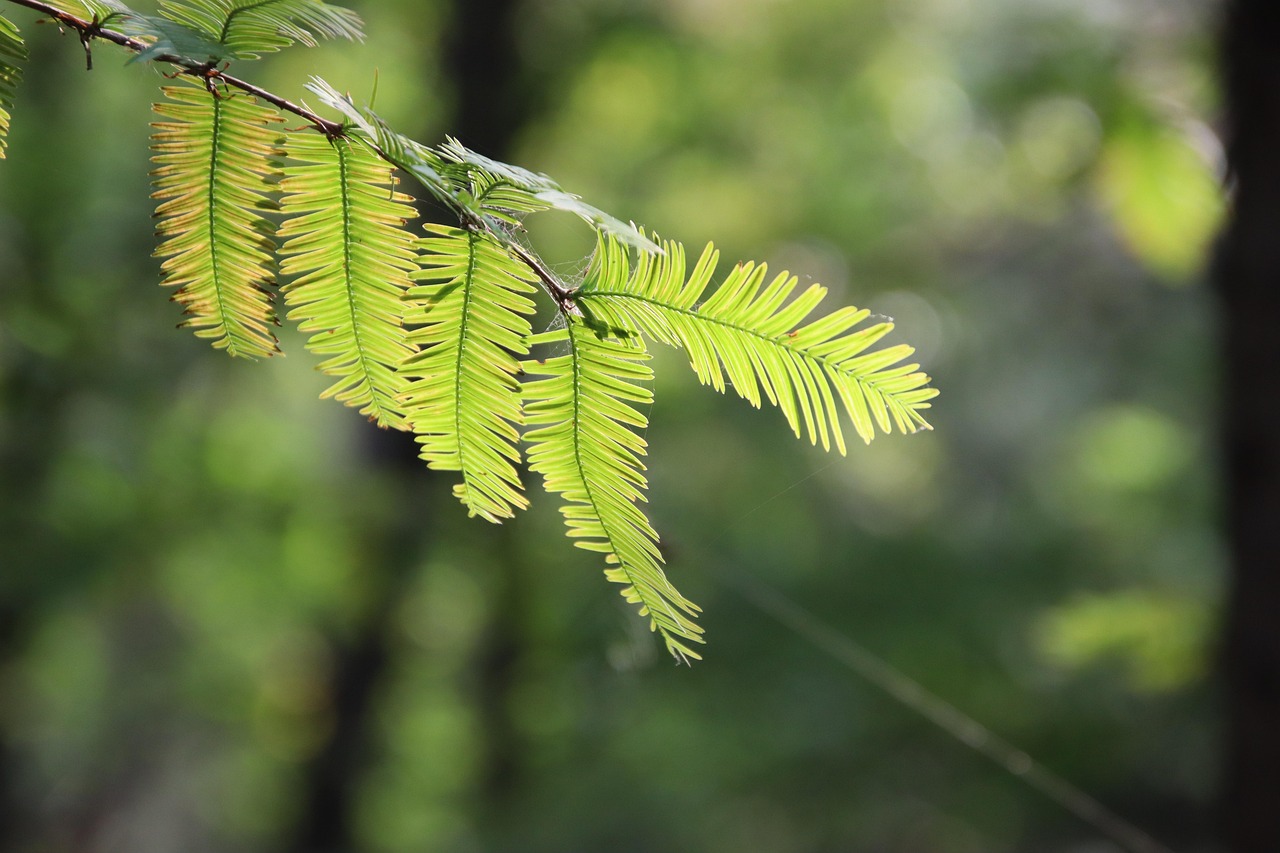The Dawn Redwood tree (Metasequoia glyptostroboides) exhibits a fast growth rate, typically reaching heights of 70 to 100 feet within 30 years. This rapid growth makes it an excellent candidate for reforestation projects aimed at restoring ecosystems and enhancing biodiversity.
Understanding the Dawn Redwood
The Dawn Redwood is a deciduous conifer native to China. It was once thought to be extinct until it was rediscovered in the 1940s. This tree is well-known for its impressive height and unique needle-like leaves that turn a vibrant reddish-brown in the fall. With a history that dates back millions of years, the Dawn Redwood thrives in moist, well-drained soils and can adapt to a variety of environmental conditions.

One of the most striking features of the Dawn Redwood is its growth rate. This characteristic makes it particularly valuable for various ecological restoration projects. Its ability to grow tall quickly allows for faster canopy development, which plays a crucial role in establishing a healthy forest ecosystem. Additionally, this tree provides essential habitats for wildlife and contributes to carbon sequestration efforts.
Growth Rate Overview
The growth rate of the Dawn Redwood is influenced by several factors including soil quality, water availability, sunlight exposure, and climate conditions. Under optimal conditions, these trees can grow more than 3 feet per year during their early years. This rapid growth can be compared to other tree species commonly used in reforestation.
Below is a comparison of the growth rates of several tree species commonly used in reforestation efforts:

| Tree Species | Average Growth Rate (Feet per Year) | Height at Maturity (Feet) |
|---|---|---|
| Dawn Redwood | 3-4 | 70-100 |
| Loblolly Pine | 2-3 | 90-100 |
| Eastern Red Cedar | 1-2 | 40-50 |
| White Oak | 1-2 | 50-80 |
This table illustrates that the Dawn Redwood not only grows faster than many other species but also achieves significant height over time. Such features make it a prime candidate for projects aimed at restoring natural habitats or creating new forests.
Ideal Conditions for Growth
To maximize the growth rate of the Dawn Redwood, certain conditions should be met. These include:
- Soil Type: Well-drained, loamy soil is ideal for healthy root development.
- Water Availability: Regular watering is crucial, especially during dry spells.
- Sunlight: Full sun exposure promotes optimal growth and development.
- Climate: Mild climates with moderate rainfall support vigorous growth.
When planted in suitable environments with adequate care, the Dawn Redwood can establish itself quickly and begin to contribute to reforestation efforts within just a few years. Its growth pattern not only enhances the landscape but also supports wildlife and helps mitigate climate change by absorbing carbon dioxide from the atmosphere.

The Role in Reforestation Projects
The use of Dawn Redwoods in reforestation projects offers numerous benefits. Their rapid growth allows for quicker canopy cover, which can help stabilize soil and reduce erosion. Furthermore, they provide shade and habitat for various species, making them a vital part of ecosystem restoration efforts.
The Dawn Redwood’s resilience to pests and diseases also adds to its appeal. It can thrive in varying conditions, making it suitable for diverse geographical locations. This adaptability ensures that planting these trees can lead to successful outcomes in many reforestation initiatives.
As global reforestation efforts gain momentum, understanding and utilizing the characteristics of tree species like the Dawn Redwood becomes increasingly important. Their fast growth rates and ecological benefits position them as key players in restoring our planet’s forests.
Advantages of Using Dawn Redwoods in Reforestation
Dawn Redwoods offer a plethora of advantages that make them particularly suitable for reforestation projects. Their unique characteristics not only enhance forest ecosystems but also contribute to environmental stability. Below are some key benefits of utilizing Dawn Redwoods in these initiatives.

- Rapid Growth: As previously mentioned, these trees can grow several feet in a single year, allowing for quick establishment of forest cover.
- Carbon Sequestration: Their ability to absorb carbon dioxide helps mitigate climate change by reducing greenhouse gases in the atmosphere.
- Biodiversity Support: Dawn Redwoods provide habitats for various wildlife species, promoting biodiversity within reforested areas.
- Soil Stabilization: Their extensive root systems help prevent soil erosion and maintain soil health.
- Aesthetic Value: With their striking appearance and seasonal color changes, Dawn Redwoods add beauty to landscapes.
Challenges in Cultivating Dawn Redwoods
While there are many advantages, cultivating Dawn Redwoods for reforestation is not without challenges. Understanding these challenges is essential for successful implementation in various projects.
- Water Requirements: Dawn Redwoods require consistent moisture, particularly during their early growth stages. In regions with low rainfall, supplemental watering may be necessary.
- Pest Management: Although relatively resilient, these trees can still be susceptible to certain pests and diseases, necessitating monitoring and potential interventions.
- Climate Adaptability: While they can thrive in various climates, extreme conditions such as prolonged drought or harsh winters may hinder their growth.
- Site Selection: Choosing the right site for planting is crucial. Poor soil quality or wrong pH levels can adversely affect growth rates.
Optimal Planting Techniques
To maximize the success of planting Dawn Redwoods, specific techniques should be followed. These practices ensure that the trees establish themselves healthily and contribute effectively to reforestation efforts.
Site Preparation
Proper site preparation is essential for successful planting. Consider the following steps:
- Soil Testing: Test the soil to determine its pH and nutrient levels. Amend the soil as necessary to create an ideal growing environment.
- Clearing Debris: Remove any weeds, rocks, or debris from the planting area to reduce competition for resources.
- Tilling: Loosen the soil to improve aeration and drainage, facilitating easier root penetration.
- Watering Plan: Develop a plan for consistent watering, particularly during dry spells after planting.
Planting Process
The planting process itself requires attention to detail. Here are some tips:
- Planting Depth: Ensure that seedlings are planted at the same depth they were grown in their containers.
- Spacing: Space seedlings adequately to allow for growth; typically, a distance of 10-15 feet between trees is recommended.
- Mulching: Apply a layer of mulch around the base of the seedlings to retain moisture and reduce weed competition.
Caring for Dawn Redwood Trees
After planting, proper care is crucial for the healthy development of Dawn Redwood trees. Regular maintenance will help ensure that they grow robustly and fulfill their ecological roles effectively.
- Irrigation: Implement a consistent watering regimen, especially during the first few years after planting.
- Pest Monitoring: Regularly inspect trees for signs of pests or diseases, taking action as necessary to protect young growth.
- Nutrient Management: Fertilize as needed based on soil tests to maintain nutrient levels conducive to growth.
- Pruning: Prune dead or damaged branches to promote healthy growth and improve airflow within the canopy.
Caring for these trees properly not only ensures their survival but also maximizes their contribution to reforestation and ecosystem restoration efforts. By addressing both advantages and challenges, stakeholders can enhance the effectiveness of using Dawn Redwoods in their projects.
The Ecological Impact of Dawn Redwoods
Dawn Redwoods play a significant role in the ecosystems where they are planted. Their fast growth and adaptability contribute to several ecological benefits, making them a valuable asset for reforestation projects. Understanding these impacts can help stakeholders appreciate the broader significance of incorporating this species into restoration efforts.
Habitat Creation
As Dawn Redwoods mature, they create diverse habitats for various wildlife species. The trees provide shelter, nesting sites, and food sources, which are crucial for maintaining biodiversity. Some of the species that benefit from the presence of Dawn Redwoods include:
- Birds: Many bird species thrive in the branches of mature Dawn Redwoods, using them for nesting and foraging.
- Mammals: Small mammals find refuge in the underbrush and root systems of these trees.
- Insects: Various insects depend on the trees for food and habitat, which in turn supports larger predators within the ecosystem.
Improving Soil Health
Dawn Redwoods contribute to soil health in several ways. Their extensive root systems help stabilize the soil, preventing erosion and runoff. Additionally, as these trees shed leaves and other organic matter, they enrich the soil with nutrients over time. This natural process fosters a healthy environment for microorganisms and other plants.
- Organic Matter Contribution: Fallen leaves decompose and enhance soil fertility.
- Soil Structure Improvement: Roots create channels that improve soil aeration and drainage.
- Microbial Activity Boost: The presence of organic matter encourages beneficial microbial activity, essential for nutrient cycling.
Dawn Redwood in Urban Reforestation
The application of Dawn Redwoods in urban reforestation projects presents unique opportunities and challenges. With their rapid growth and resilience, they can help combat urban issues such as heat islands and air pollution.
Mitigating Urban Heat Islands
Cities often experience elevated temperatures due to concrete and asphalt surfaces. Planting trees like Dawn Redwoods can help mitigate these heat islands by providing shade and releasing moisture through transpiration. The following points illustrate this advantage:
- Temperature Reduction: Shade from trees cools the surrounding air, potentially lowering urban temperatures by several degrees.
- Energy Savings: Reduced temperatures can lower energy costs associated with air conditioning in nearby buildings.
- Aesthetic Appeal: Well-placed trees enhance urban landscapes, contributing to improved quality of life for residents.
Air Quality Improvement
Dawn Redwoods also contribute to improved air quality in urban settings. Trees act as natural air filters by absorbing pollutants and carbon dioxide while releasing oxygen. The following aspects highlight their importance in urban environments:
- Pollutant Absorption: Trees absorb harmful gases such as sulfur dioxide, ammonia, and nitrogen oxides.
- Dust and Particulate Reduction: Leaves trap dust and particulate matter from the air, improving overall air quality.
- Carbon Sequestration: As these trees grow, they sequester carbon dioxide, helping to combat climate change.
Dawn Redwood Varieties and Cultivation Techniques
While the common Dawn Redwood is widely recognized, there are several cultivars that exhibit unique characteristics suited for different environments. Understanding these varieties can aid in selecting the right type for specific reforestation projects.
Cultivar Options
Some notable cultivars of the Dawn Redwood include:
- Metasequoia glyptostroboides ‘Gold Rush’: This variety features golden-yellow foliage that adds visual interest to landscapes.
- Metasequoia glyptostroboides ‘Shawnee Brave’: Known for its narrow form, this cultivar is ideal for tighter spaces or urban settings.
- Metasequoia glyptostroboides ‘Mikado’: A dwarf variety that is perfect for smaller gardens or ornamental uses.
Cultivation Techniques for Specific Varieties
Different cultivars may require slightly varied cultivation techniques. Here are some tips for successful growth:
- Selecting the Right Site: Ensure compatibility with soil type, moisture levels, and sunlight exposure specific to each variety.
- Watering Needs: Adjust watering based on the specific growth habits of each cultivar; some may require more or less moisture than others.
- Pest Management Strategies: Monitor each cultivar closely for pests or diseases that may be more prevalent in certain varieties.
The choice of cultivar can significantly affect the success and ecological impact of reforestation projects involving Dawn Redwoods. By understanding the unique traits of each variety, stakeholders can make informed decisions that align with their specific environmental goals.
Future of Dawn Redwood in Reforestation Efforts
As the urgency for addressing climate change and restoring ecosystems grows, the role of Dawn Redwoods in reforestation projects becomes increasingly important. These trees not only provide rapid growth and environmental benefits but also serve as a symbol of resilience and adaptability in the face of changing climates. The following points highlight the potential future contributions of Dawn Redwoods in various contexts:
Innovative Reforestation Strategies
With advancements in ecological restoration techniques, integrating Dawn Redwoods into innovative reforestation strategies can enhance their impact. Some emerging strategies include:
- Agroforestry: Combining agriculture with the cultivation of Dawn Redwoods can provide economic benefits while improving soil health and biodiversity.
- Community-Based Initiatives: Involving local communities in planting and maintaining Dawn Redwoods can foster stewardship and ensure sustainable practices.
- Urban Forestry Programs: Implementing urban forestry initiatives that include Dawn Redwoods can improve urban environments while promoting public awareness of reforestation efforts.
Research and Development
Ongoing research into the genetics, growth habits, and ecological interactions of Dawn Redwoods is essential for optimizing their use in reforestation projects. Key areas of focus may include:
- Genetic Diversity Studies: Understanding the genetic diversity within Dawn Redwood populations can aid in selecting resilient varieties for specific environments.
- Climate Adaptation Research: Investigating how Dawn Redwoods respond to changing climate conditions will help in developing strategies to enhance their survival and growth rates.
- Pest Resistance Analysis: Studying pest interactions with Dawn Redwoods can lead to better management practices, ensuring healthy growth in diverse environments.
Community Engagement and Education
Engaging communities in reforestation efforts involving Dawn Redwoods fosters a sense of ownership and responsibility. Educational programs can play a pivotal role in this process by:
- Raising Awareness: Informing communities about the ecological benefits of Dawn Redwoods encourages participation in local reforestation initiatives.
- Providing Training: Offering workshops on proper planting techniques and maintenance can empower community members to care for their local environment.
- Encouraging Volunteerism: Organizing tree-planting events can bring people together and promote teamwork while enhancing local green spaces.
Final Thoughts
The Dawn Redwood tree stands out as a remarkable species with significant potential for reforestation projects. Its rapid growth rate, adaptability to various environments, and ecological benefits make it an invaluable asset in combatting climate change and restoring biodiversity. By carefully considering the unique characteristics of different cultivars, implementing effective cultivation techniques, and engaging communities, stakeholders can maximize the impact of Dawn Redwoods in reforestation efforts.
As we continue to face environmental challenges, the importance of integrating effective species like the Dawn Redwood into our restoration strategies cannot be overstated. These trees not only improve ecological health but also offer aesthetic and social value to our landscapes. By fostering a deeper understanding of their role, we can inspire future generations to protect and nurture our planet’s forests.
The journey towards sustainable reforestation is ongoing, and with continued research, community involvement, and innovative practices, the Dawn Redwood will undoubtedly play a crucial role in shaping healthier ecosystems for years to come.
